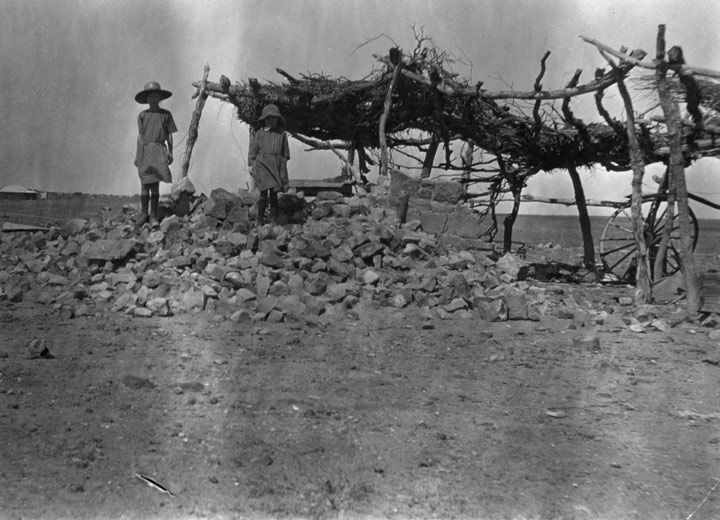Due to scheduled maintenance on Friday 19th April 2024 between 7:00PM and 9:00PM AEST, the Scootle website may face disruption in service. We apologise for any inconvenience caused.
 The water well at Birdsville Provisional School, c1927
The water well at Birdsville Provisional School, c1927
TLF ID R9659
This black-and-white photograph taken by teacher Clifford Everitt in about 1927 shows two young female students standing by a well at Birdsville Provisional School in south-western Queensland. The surrounding landscape is dry and bare. The well is sheltered by a raised covering made of branches and twigs. An old wagon wheel leans against one of the uprights. The children, wearing hats, dresses and long socks, stand on a pile of rocks by the well. There appears to be a crumbling 'pise' wall made of sand mixed with clay at the edge of the well.
